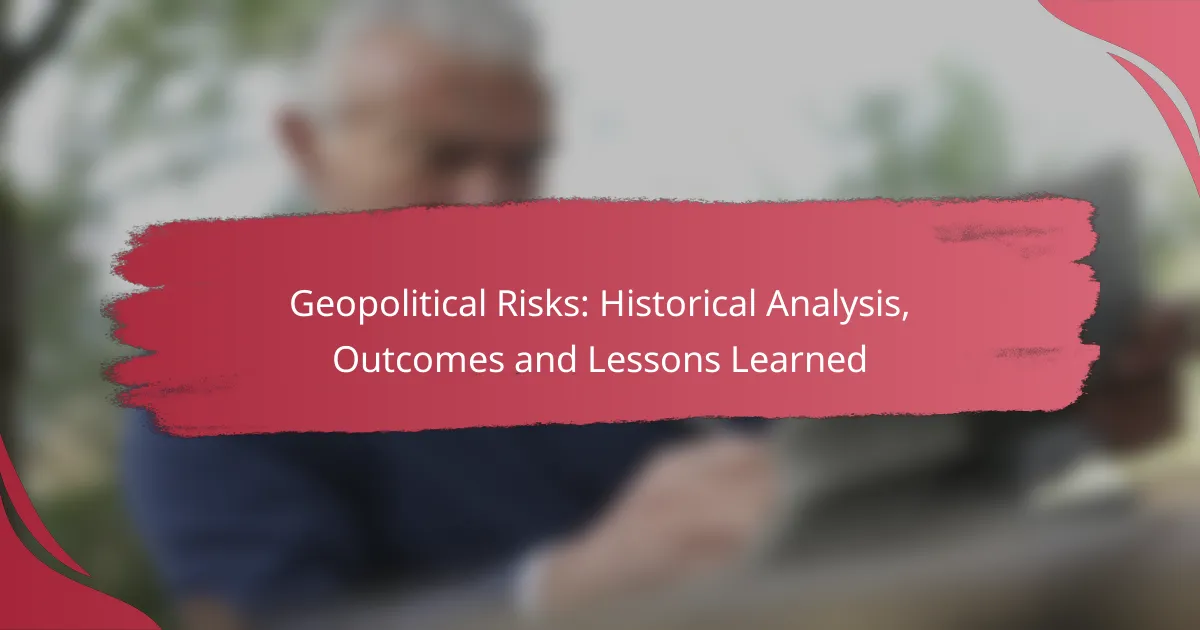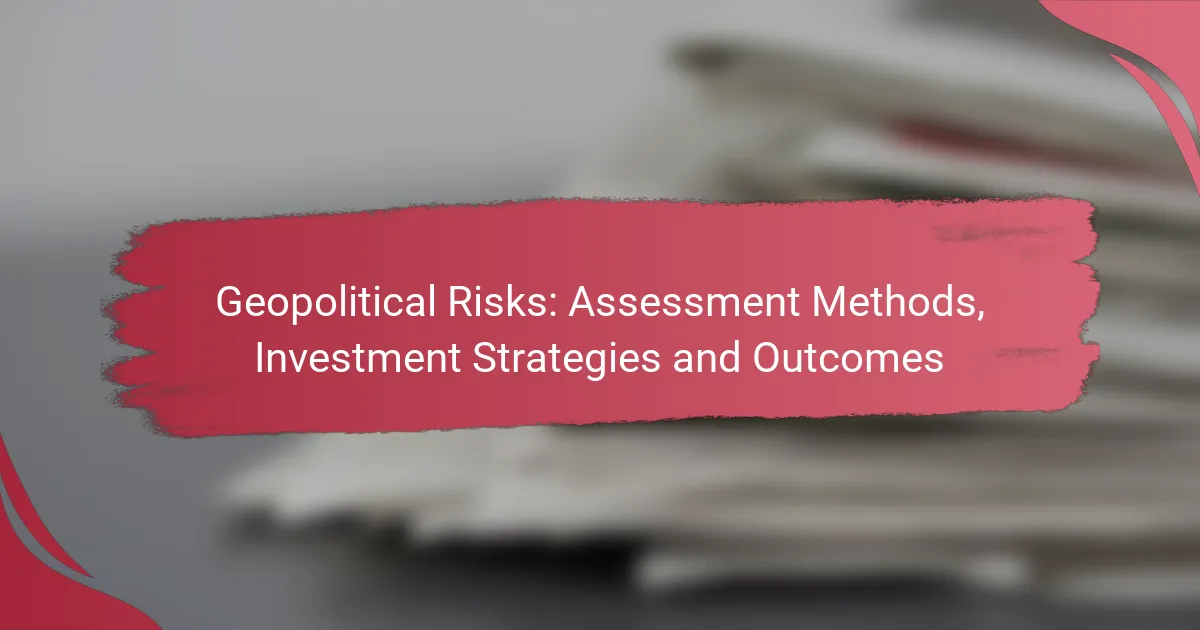Geopolitical risks have shaped the course of history, influencing international relations and economic policies across the globe. By examining past events and their outcomes, we can gain valuable insights into current tensions and the potential implications for the future. Understanding these dynamics is crucial for developing effective strategies to mitigate risks and navigate an increasingly complex global landscape.
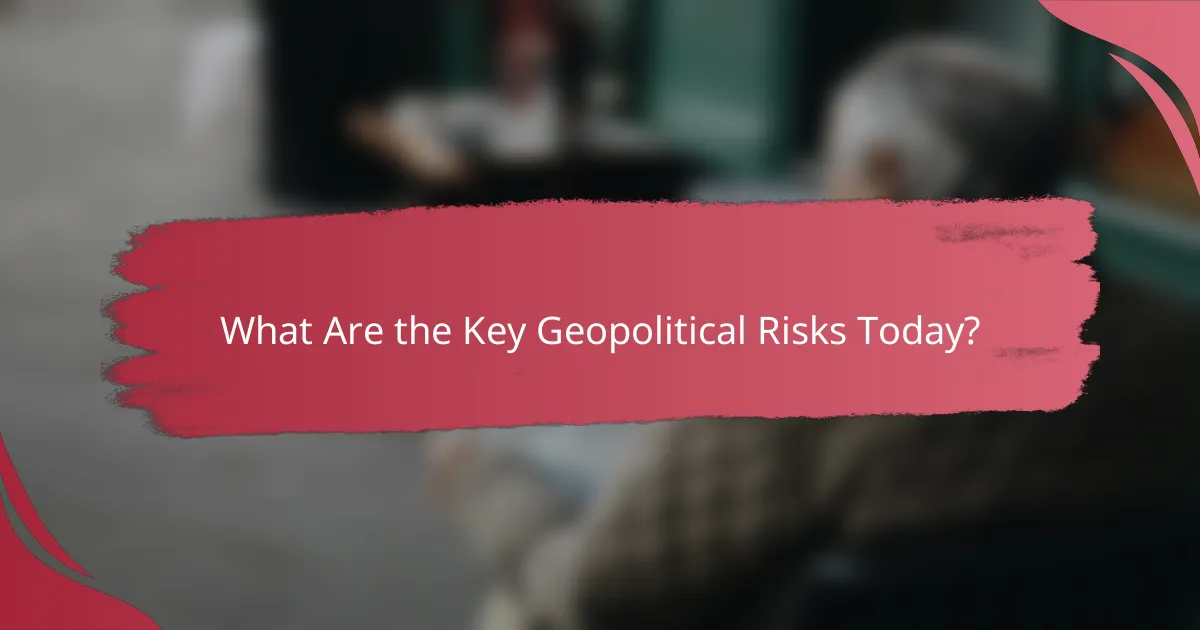
What Are the Key Geopolitical Risks Today?
Key geopolitical risks today include economic instability, military conflicts, cybersecurity threats, climate change impacts, and resource scarcity. These factors can significantly influence global relations and economic conditions, affecting nations and businesses alike.
Economic instability
Economic instability refers to fluctuations in economic performance that can lead to recession or inflation. Factors such as high unemployment rates, volatile markets, and unpredictable government policies contribute to this risk. Countries experiencing economic turmoil may face social unrest, which can further destabilize the region.
For instance, nations in Eastern Europe have seen economic challenges due to shifts in trade policies and energy prices. Businesses should monitor economic indicators and be prepared for potential disruptions in supply chains or market access.
Military conflicts
Military conflicts arise from tensions between nations or groups, often leading to war or armed confrontations. These conflicts can disrupt trade routes, impact global security, and create humanitarian crises. Understanding the geopolitical landscape is crucial for businesses operating in or with affected regions.
Recent examples include conflicts in the Middle East and Eastern Europe, which have led to sanctions and trade restrictions. Companies should assess their exposure to these risks and develop contingency plans to mitigate potential impacts.
Cybersecurity threats
Cybersecurity threats involve attacks on digital infrastructure, which can compromise sensitive information and disrupt operations. These threats can originate from state-sponsored actors or independent hackers, targeting both private and public sectors. Organizations must prioritize cybersecurity measures to protect against data breaches and operational downtime.
Investing in robust cybersecurity protocols, regular training for employees, and incident response plans can help mitigate these risks. Additionally, staying informed about emerging threats and vulnerabilities is essential for maintaining security.
Climate change impacts
Climate change impacts refer to the effects of global warming on weather patterns, sea levels, and natural resources. These changes can lead to extreme weather events, affecting agriculture, infrastructure, and human health. Nations vulnerable to climate change may face increased migration and conflict over resources.
Businesses should assess their environmental impact and develop strategies for sustainability. Engaging in climate risk assessments and adapting operations to be more resilient can help mitigate potential disruptions.
Resource scarcity
Resource scarcity occurs when essential resources, such as water, energy, and raw materials, become limited due to overconsumption or environmental degradation. This scarcity can lead to competition among nations and increased prices for consumers. Understanding resource availability is critical for strategic planning.
For example, water scarcity in parts of Africa and the Middle East has led to tensions and conflicts. Companies should evaluate their resource dependencies and consider sustainable practices to reduce their impact on scarce resources.

How Have Historical Geopolitical Risks Shaped Current Events?
Historical geopolitical risks have significantly influenced today’s global landscape, affecting international relations, economic policies, and security strategies. Understanding these past events helps in analyzing current tensions and predicting future outcomes.
Case study: Cold War tensions
The Cold War exemplifies how geopolitical risks can create long-lasting divisions and conflicts. The ideological battle between the United States and the Soviet Union led to proxy wars, nuclear arms races, and the establishment of military alliances like NATO and the Warsaw Pact.
Current events, such as tensions between Russia and NATO, can be traced back to the Cold War’s legacy. The ongoing disputes over influence in Eastern Europe and the Baltic states highlight how historical rivalries continue to shape contemporary geopolitics.
Impact of World War II
World War II reshaped global power dynamics, leading to the emergence of the United States and the Soviet Union as superpowers. The war’s aftermath saw the establishment of the United Nations, aimed at preventing future conflicts and promoting international cooperation.
The division of Europe into Eastern and Western blocs created a geopolitical landscape that influenced alliances and conflicts for decades. Understanding these historical outcomes is crucial for analyzing current issues, such as the rise of nationalism and regional conflicts in Europe.
Lessons from the Arab Spring
The Arab Spring demonstrated how grassroots movements can rapidly alter political landscapes, revealing the power of public sentiment in driving change. While some countries transitioned to democracy, others experienced civil unrest and authoritarian backlash.
Current geopolitical risks in the Middle East reflect the complexities of these transitions. Countries like Syria and Libya illustrate the potential for instability following revolutions, emphasizing the need for careful consideration of local contexts when addressing geopolitical challenges.
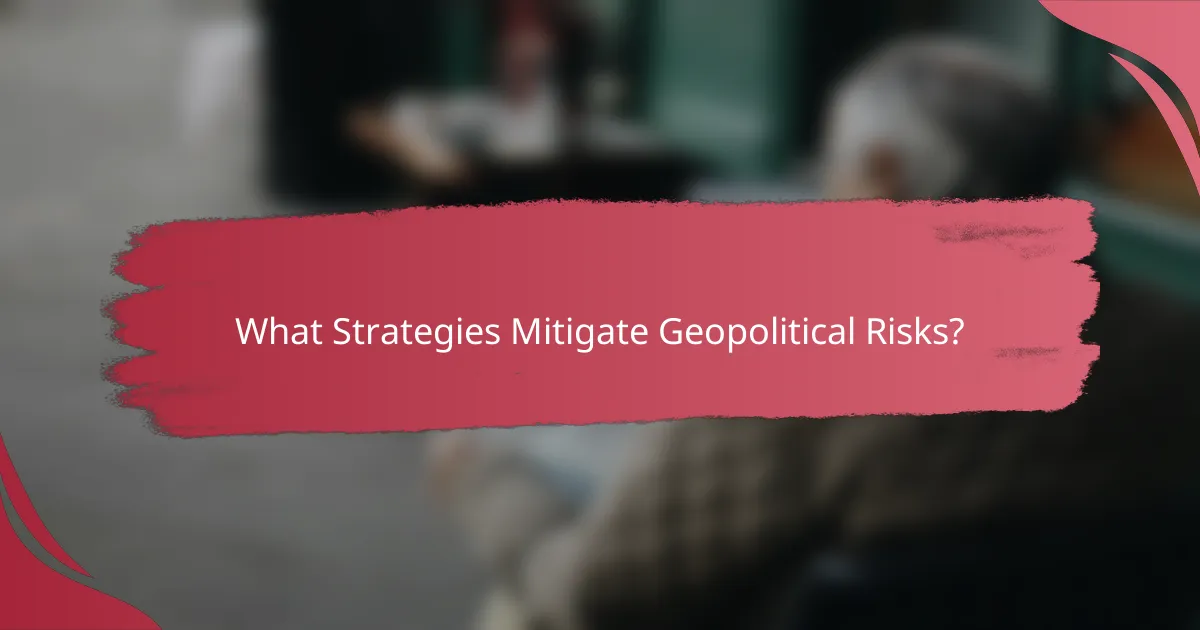
What Strategies Mitigate Geopolitical Risks?
Strategies to mitigate geopolitical risks include diplomatic negotiations, economic sanctions, and military alliances. Each approach has its own strengths and weaknesses, and the effectiveness can vary based on the specific context and actors involved.
Diplomatic negotiations
Diplomatic negotiations are essential for resolving conflicts and reducing tensions between nations. These discussions can lead to treaties or agreements that address underlying issues, fostering stability and cooperation.
Key considerations in diplomatic negotiations include understanding the interests of all parties, maintaining open communication, and being willing to compromise. Successful negotiations often involve third-party mediators who can facilitate dialogue and build trust.
Economic sanctions
Economic sanctions are tools used to pressure governments or entities by restricting trade, investment, or financial transactions. They aim to change behavior without resorting to military action, making them a preferred option in many cases.
When implementing sanctions, it is crucial to consider their potential impact on civilian populations and the economy. Targeted sanctions, which focus on specific individuals or sectors, can be more effective and less harmful than broad-based measures.
Military alliances
Military alliances involve agreements between countries to support each other in defense matters, enhancing collective security. These alliances can deter aggression and provide a framework for coordinated responses to threats.
Examples include NATO, which unites member states under a mutual defense clause. Countries should evaluate the benefits of joining alliances against potential obligations and the risk of entanglement in conflicts that do not directly affect their national interests.
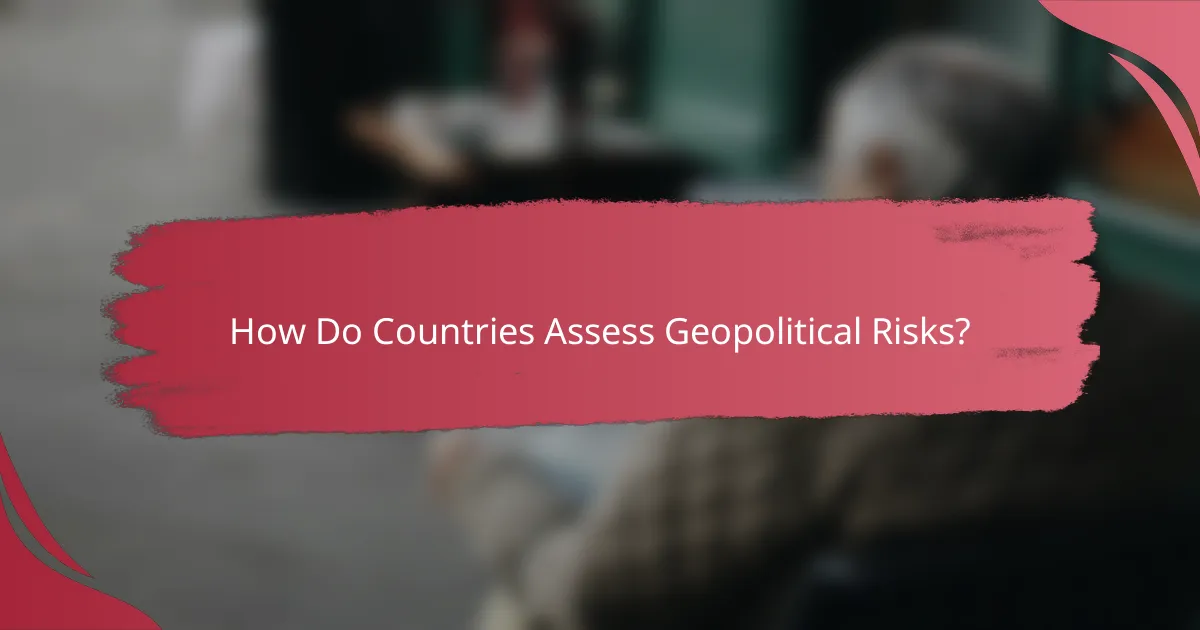
How Do Countries Assess Geopolitical Risks?
Countries assess geopolitical risks through a combination of analytical frameworks and intelligence-gathering methods. This process involves evaluating potential threats and opportunities that could impact national security and economic stability.
Risk assessment frameworks
Risk assessment frameworks provide structured methodologies for evaluating geopolitical risks. Common frameworks include SWOT analysis (Strengths, Weaknesses, Opportunities, Threats) and PEST analysis (Political, Economic, Social, Technological). These tools help countries identify key factors influencing their geopolitical landscape.
When using these frameworks, countries often prioritize risks based on their likelihood and potential impact. For instance, a country may assess the risk of regional conflicts or economic sanctions as high priority due to their immediate implications for national security.
Intelligence gathering methods
Intelligence gathering methods are crucial for understanding geopolitical risks. Countries utilize a variety of sources, including satellite imagery, diplomatic communications, and open-source intelligence from media and social platforms. This diverse approach allows for a more comprehensive view of potential threats.
Additionally, collaboration with international allies enhances intelligence capabilities. Sharing information through organizations like NATO or the United Nations can provide insights that individual countries might miss, leading to more informed risk assessments.
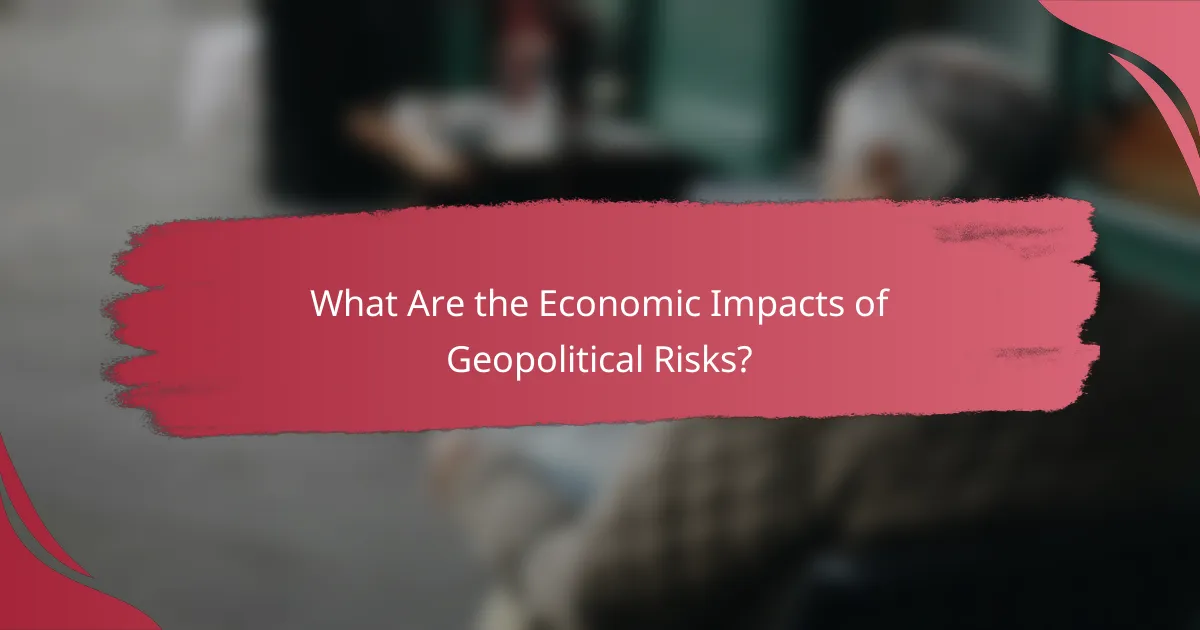
What Are the Economic Impacts of Geopolitical Risks?
Geopolitical risks can significantly disrupt economies by causing instability in markets, affecting trade flows, and altering investment patterns. These risks often lead to uncertainty, which can impact consumer confidence and business operations.
Market volatility
Market volatility is a common consequence of geopolitical risks, as investors react to news and events that may affect economic stability. For instance, tensions in regions rich in natural resources can lead to sudden price fluctuations in commodities like oil and gas, impacting global markets.
During periods of heightened geopolitical tension, stock markets may experience sharp declines or rapid recoveries, often driven by speculation. Investors should be prepared for increased price swings and consider diversifying their portfolios to mitigate risks associated with such volatility.
Investment shifts
Geopolitical risks often prompt significant shifts in investment strategies, as businesses and investors seek safer environments. For example, companies may relocate operations to countries perceived as more stable, leading to changes in foreign direct investment flows.
Investors may also pivot towards sectors considered less vulnerable to geopolitical tensions, such as utilities or consumer staples. Understanding these shifts can help in making informed decisions about asset allocation and identifying potential opportunities in emerging markets.
